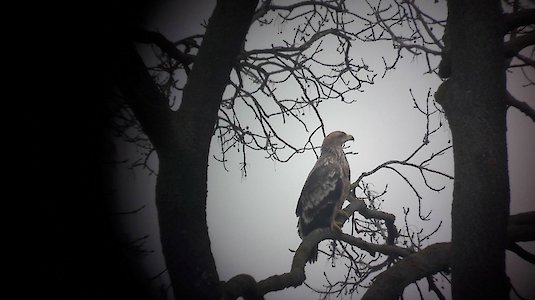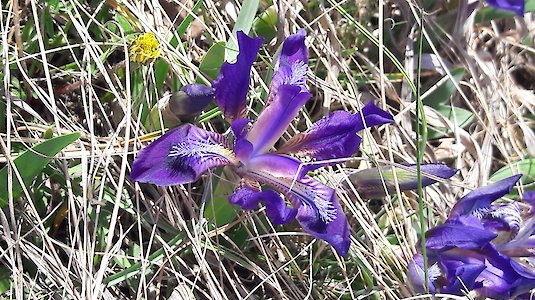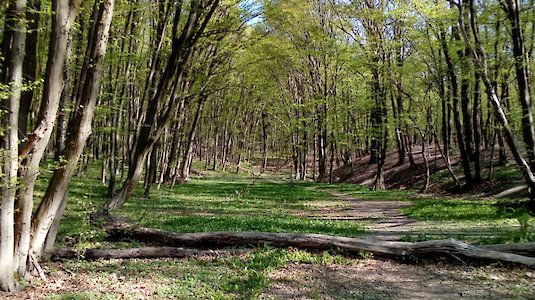biodiversity strategy 2030+
As a party to the United Nations Convention on Biological Diversity, Austria has committed itself to protect biodiversity, to use its components sustainably and to take responsibility for the conservation of global biodiversity.
The present Biodiversity Strategy Austria 2030+ was developed through a broad-based, participatory process, which was designed to actively involve all relevant actors, stakeholders and experts and to define Biodiversity Strategy Austria the concern "biodiversity" as a common task.

Land of mountains - land of diversity? It needs great efforts to stay that way.
The Biodiversity Strategy Austria 2030+ takes up the objectives and measures for the conservation of biodiversity formulated by the European Union and at the international level. A ten-point program provides national quantitative and qualitative targets and the necessary conditions for the conservation of biodiversity in all habitats in Austria. The sectors relevant for biodiversity are addressed as well as necessary framework conditions. These targets and the corresponding measures are aimed at protecting biodiversity in Austria, actively addressing threats and thus preventing further losses, and also creating the appropriate framework conditions:
- Improving the status and trends of species and habitats,
- Effective protection and networking of all ecologically valuable habitats,
- Restoration of ecosystems of particular importance for biodiversity and climate protection,
- Decisive reduction of land use and fragmentation,
- Initiation of transformative change in society and integration of biodiversity into all sectors - "mainstreaming",
- Strengthening global engagement,
- Improving regulatory frameworks for biodiversity conservation,
- Securing funding for biodiversity conservation and support for biodiversity-enhancing action,
- Valuing biodiversity in society and the economy,
- Improving the scientific basis for achieving and evaluating biodiversity targets.
The implementation of the Biodiversity Strategy Austria 2030+ is also intended to contribute to a comprehensive transformative change in our society.
Biodiversity in Austria
Austria is one of the most species-rich countries in Central Europe. About 68,000 species, including about 45,000 animal species and about 2,900 ferns and flowering plants, are found in this country. Insects make up the largest group with about 40,000 species. Almost 600 animal species and about 150 plant species are unique to Austria. This diversity is due to the high number of different habitats.

Long considered extinct, the eastern imperial eagle (Aquila heliaca). Meanwhile there are again some breeding pairs in Lower Austria and Burgenland, but unfortunately still "strongly endangered".
A look at the Red Lists
Human activities have led to habitat loss, degradation and fragmentation of habitats for many species both on a global scale, but especially in the densely populated countries of Central Europe. Habitat loss leads to population declines, range losses, increased risk of extinction, and eventual local extinction of populations and species. Red Lists provide a comprehensive overview of the endangerment status of species in a given region. They are one of the most well-established conservation tools. Contemporary Red Lists also provide information on endangerment factors and measures to protect species.
In Austria, more than half of all amphibians and reptiles are critically endangered, as well as almost half of all fish and one third of all birds and mammals.
The overall picture that emerges from the Red Lists of endangered plants is also worrying. In the best-researched plant group, the ferns and flowering plants, over 60% of the species appear in the Red Lists! A similar picture emerges for mosses and lichens. In the case of the large fungi and algae, only a selection of better known species could be assessed in each case, so that concrete statements are not yet possible; the situation of algae is additionally aggravated because of the particularly large influence of the pollution of air and waters. [2]

In the picture, the highly endangered dwarf iris (Iris pumila).
Biotope destruction, alteration and fragmentation are of paramount importance as causes of damage and destruction of plant and animal occurrences!
The Austrian Ecolabel - Contributions to Biodiversity
The Austrian Ecolabel contributes to the conservation and promotion of biodiversity in many different ways. Here is a brief overview:
In the Tourism and Leisure-time Industry Guidline UZ200, biodiversity is addressed in the sustainability concept, in employee* training and in guest information.
Biodiversity also plays a role in the Sustainable Financial Products UZ49. For example, in the criteria for investment products with portfolio character (funds) for companies, for government bonds and government-related issuers, as well as real estate.
Of course, biodiversity plays a particularly important role around the various products in the garden and green space sector.
At the guidelines in the field of education (UZ301, UZ302, UZ303), biodiversity is promoted not only in the didactic, but also in the practical.
[2] https://www.umweltbundesamt.at/umweltthemen/naturschutz/biologischevielfalt
